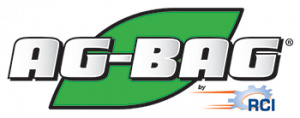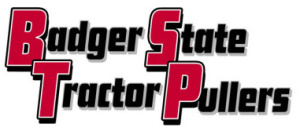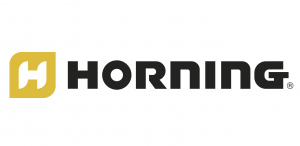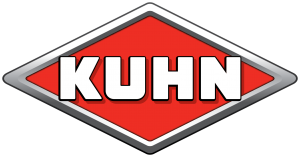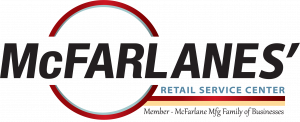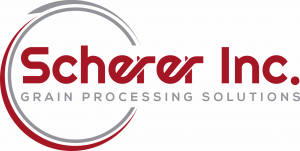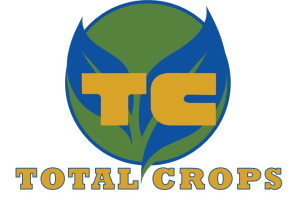News and Events
Latest hay merger technology offers options to farmers
Posted On: April 07, 2021
By Mary Hookham for WCO
Hay mergers come in a variety of shapes and sizes from several different companies. Farmers can find features and benefits that will best serve their needs while improving efficiency.
“Serviceability is a big thing on hay mergers,” said Ben Craker, senior product manager with Kuhn North America.
During the Midwest Forage Association annual symposium, Craker and three colleagues detailed new features and benefits of hay mergers from their four respective companies. Many of these improvements were results of customer feedback.
All commercial mergers have drivelines to keep them straight and large volumes of oil to keep the machines cool, Craker said. Kuhn now offers floating wind guards to help keep windrows consistent as well as crop nets to retain leaves. These features are increasing merging speed by one-half mile per hour as the mergers pick up the crop and put it on the conveyor belt.
“With crop nets on top, we’re able to catch leaves that blow away otherwise and direct them back down into the crop to enhance the nutrient value,” he said.
Kuhn also offers commercial-grade belts, a variety of windrow delivery options, constant float suspension, floating skid shoes, indicator control systems for head pick up height and speed and an automatic clean out mode. The clean out mode uses gravity to pull the crop down and saves time.
Split bearings and wear guards, hallmarks of mergers made by Kuhn, are now being made of plastic for easy removal for maintenance. Anti-wrap discs help prevent longer crops from getting wrapped up in the machine.
Josh Bartholomew, Oxbo International hay and forage territory sales manager, shared the benefits of investing in mergers over rakes. Merging hay reduces ash content because the crop is picked up and conveyed off the ground. Mergers increase productivity because farmers can move up to 12 miles per hour faster, they provide versatility in the field and improve forage quality of hay.
“Farmers can get back to doing hay in a day,” Bartholomew said. “There is also less dirt and leaf loss.”
Oxbo offers five merger models with pick up widths ranging from 12 inches to 40 inches. The three-point hitch can accommodate larger tractors, and the hitch-mounted gearbox and pumps reduce maintenance. The gearbox now has higher torque and gear oil capacity while the pump-gearbox combination delivers 49 percent more hydraulic flow.
The merger models 2330 and 2334 offer hydraulic float systems, positive drive motors and skid shoes. Those models as well as the 2340 model have steerable rear wheels for added maneuverability.
A 90-gallon hydraulic oil reservoir improves cooling capabilities and the rear-mounted hydraulic tank and access platform make maintenance easier. Options on Oxbo’s mergers include auto lube standard and a dry hay skirt.
H&S Manufacturing offers a 28-foot 2-inch merging width with the ability to merge five windrows into one without the need for an additional cross-conveyor, said Ron Zygarlicke, product and marketing manager for H&S.
The company also offers a patented center cam/center drive with rubber mounted teeth. The 5128 Twin Flex merger comes standard with a self-contained hydraulic system, manual hydraulic controls, manual adjust skid shoes and 16.5 by 16.1 tires with rims. The 6128 Twin Flex merger comes with soft-shoe suspension technology, which is a self-contained, self-monitoring suspension system that provides the softest merger head footprint in the industry, Zygarlicke said. This technology works well in wet soils, rough terrain and new seeding.
H&S mergers also have remote filter package and dual cross-conveyor drive options available.
Dave Eisentraut, owner of Eisentraut Ag Services and dealer for ROC Service Company, said the RT 730 hay merger model offers the shortest wheel base in the industry with a two-point hitch that oscillates and can pivot 100 degrees. This allows a tractor to run parallel to the pick up with no steering components needed.
All machines use universal heads that come in two different sizes and configurations depending on machine width. Belt tensioning is simple, Eisentraut said. Every head has one adjustment and is spring-loaded with an indicator. Belts can be stretched to maximum tension three times before replacements are needed.
“Our belt system returns around the tail wheel,” he said. “As the belt starts to stretch, you can loosen the tensioner all the way up and then start out fresh on your adjustment again. This can be done on both ends of the head.”
ROC mergers are easy to repair and maintain and have a modular system on the conveyor belts. Rubber flaps on the belts open up to allow debris to fall out. The cam system is designed to be removed without dismantling the entire head, and the tandem axle set of wheels move contour to the ground providing more suspension.





